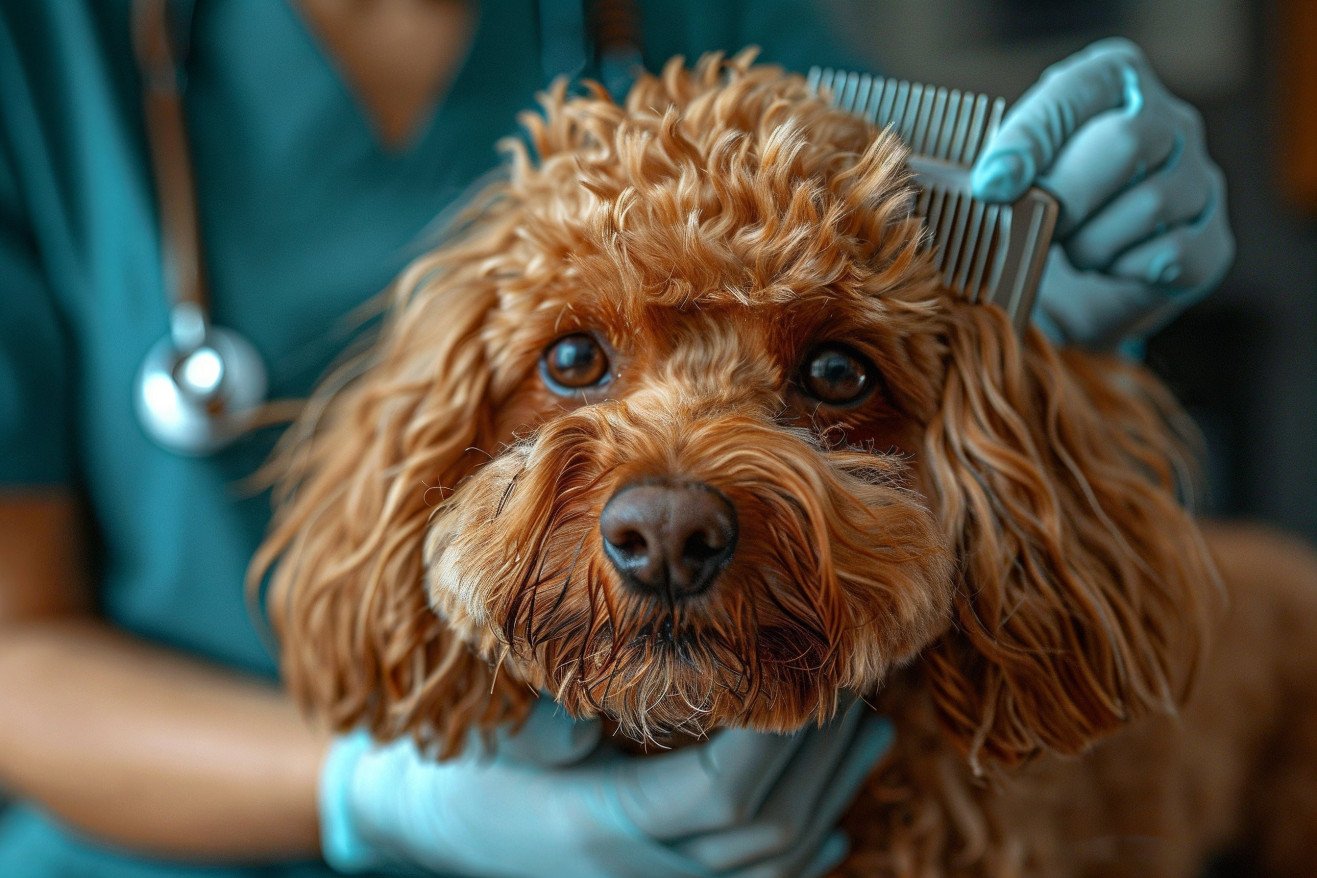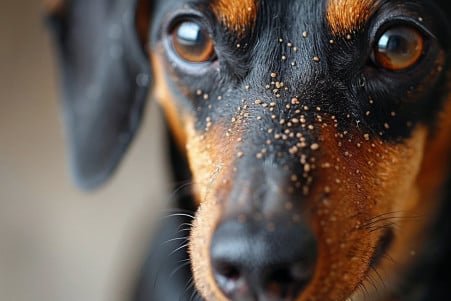Can Dogs Get Lice From Humans? What Pet Owners Need to Know
1 April 2024 • Updated 1 April 2024

Can your furry friend catch lice from you, or are these pesky parasites species-specific? While dogs can get lice, they can't get the same type of lice that humans get. That said, dogs have their own lice species, and if left untreated, these lice can cause skin issues.
In this evidence-based article, we'll look at information from veterinarians and scientific research on parasites to help you understand exactly what types of lice impact dogs. We'll also cover how lice are transmitted, what the symptoms of lice in dogs are, and the best ways to treat lice in dogs. This information will help you make sure that you're doing everything you can to keep your dog healthy and happy.
Can dogs get lice from humans?
Kinds of Lice That Affect Dogs and Their Symptoms
There are three main species of lice that affect dogs - the dog chewing louse, the dog sucking louse, and the dog body louse. While these parasites can be transmitted to humans, they can still cause a lot of discomfort for dogs.
One of the most common symptoms of lice is extreme, constant itching that can cause dogs to scratch themselves raw, leading to hair loss, skin irritation, and self-trauma. In addition, lice bites can cause a dog's skin to become rough and matted. In some cases, anemia can also occur due to blood loss, especially in puppies and dogs with weaker immune systems.
Lice are most common in dogs living in unsanitary conditions and dogs with weaker immune systems and malnutrition. That said, it's important to catch lice early by looking for light-colored lice, nits (lice eggshells), or dandruff-like debris. Catching lice early can help ensure that the infestation doesn't get worse and cause more discomfort or health issues. Knowing these common signs can help dog owners catch the problem as soon as possible.
How to Treat Dog Lice
Veterinarians typically treat dog lice with topical insecticides, such as spot-on products, shampoos, and sprays. MyPetAndi notes that products like Advantage®II and K9 Advantix®II can kill lice on contact. Oral medications, including selamectin, ivermectin, and fipronil, may be used to treat more severe infestations.
In addition to medication, grooming is an important part of the treatment process. The Merck Veterinary Manual recommends clipping matted hair and using a flea comb to get rid of live and dead lice. It's also important to note that treatment will likely need to be repeated several times to ensure that the infestation is completely gone and to prevent future infestations.
Most importantly, FirstVet stresses the importance of treating all dogs in the household and cleaning their environment to prevent the spread of lice. This includes washing bedding, clothing, leashes, and collars, and replacing grooming equipment that could be housing lice eggs. Making sure that you're following a thorough treatment plan is the best way to ensure that your dog's lice infestation is under control.
How to Keep Dogs From Getting Lice
In addition to regular grooming and bathing with flea/tick shampoos, other ways to prevent lice infestations include keeping a clean living environment and washing bedding regularly, according to Vets4Pets and Charlotte Kennels.
Feeding dogs a healthy diet and making sure they are in good overall health can help ensure they have strong immune systems that are better able to fight off parasites like lice, according to WagWalking. In addition, giving dogs monthly broad-spectrum antiparasitic medications can help protect them from lice and other external parasites, according to the American Veterinary Medical Association.
To minimize the chances of lice infestations, it's also important to avoid overcrowded or unsanitary conditions and to limit exposure to stray or untreated dogs, according to Charlotte Kennels. By following these preventative measures, dog owners can help ensure their pets stay lice-free and happy.
How Do Dogs Get Lice and What Are the Risk Factors?
Lice are highly contagious between dogs and can be transmitted through direct contact or by sharing items like brushes, combs, and bedding. Per Elanco, dogs that live in crowded or unsanitary conditions, like shelters and kennels, are at a greater risk of getting lice. Puppies, senior dogs, and dogs with compromised immune systems are also more likely to experience severe infestations, according to Oakhurst Veterinary Hospital.
Dogs that are strays or are otherwise neglected are more likely to have lice due to their living conditions and lack of proper care, according to Animal Wellness Magazine. Knowing these risk factors can help dog owners make sure they're taking the right precautions and keeping a close eye on their pets for signs of lice. By knowing how lice are transmitted and the situations that make dogs more susceptible, owners can make sure they're doing everything they can to keep their dogs safe.
Conclusion: How to Prevent Lice in Dogs
While dogs cannot get lice from humans, they can still be affected by the their own species-specific lice. Recognizing the signs of lice infestations and seeking prompt treatment is crucial for a dog's comfort and health. Implementing preventative measures, such as regular grooming and environmental cleaning, can help reduce the risk of infestations.
Maintaining good overall health and using appropriate preventative medications can also help protect dogs from lice and other parasites. By understanding the relationship between human and dog lice, and taking proactive steps, pet owners can ensure their furry companions remain lice-free and comfortable.


